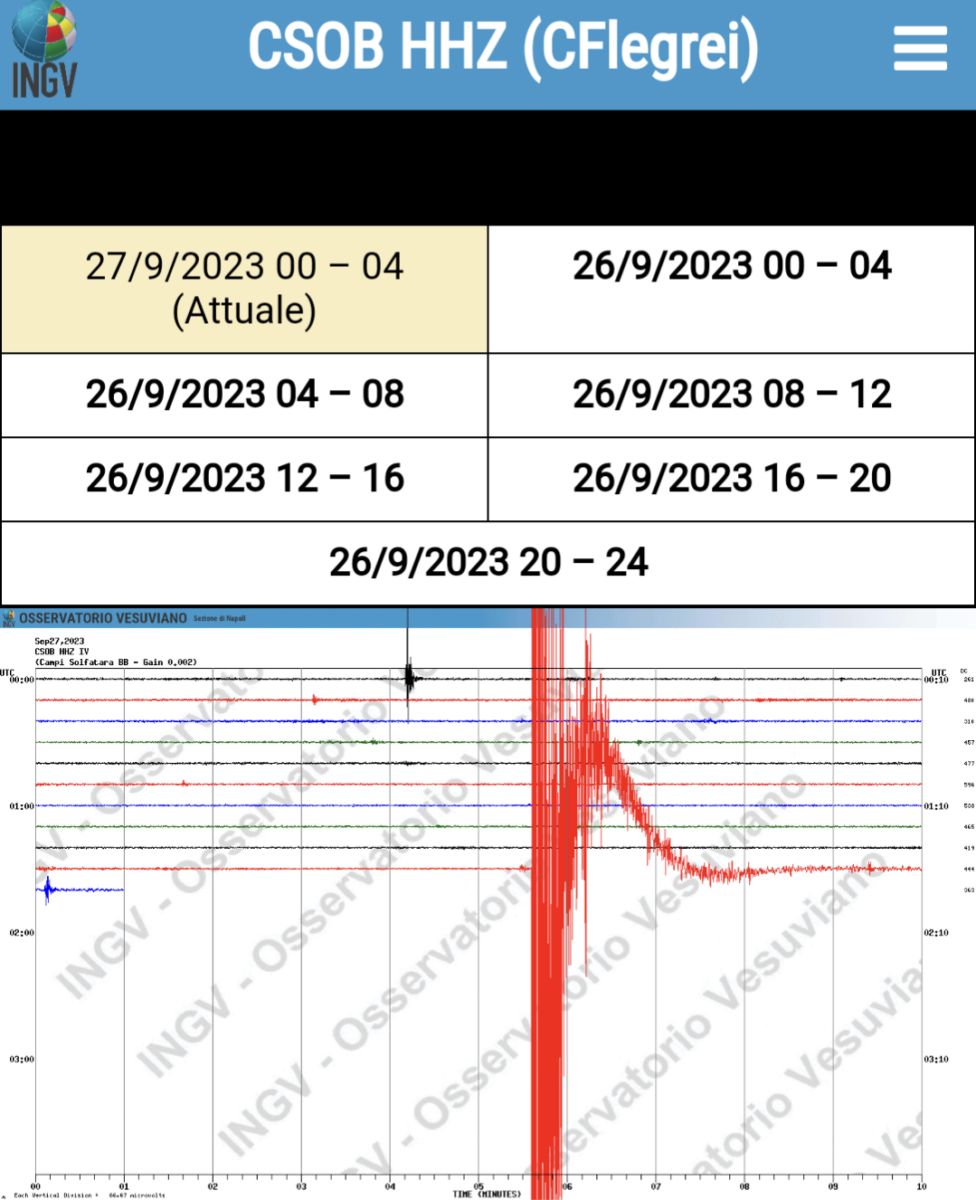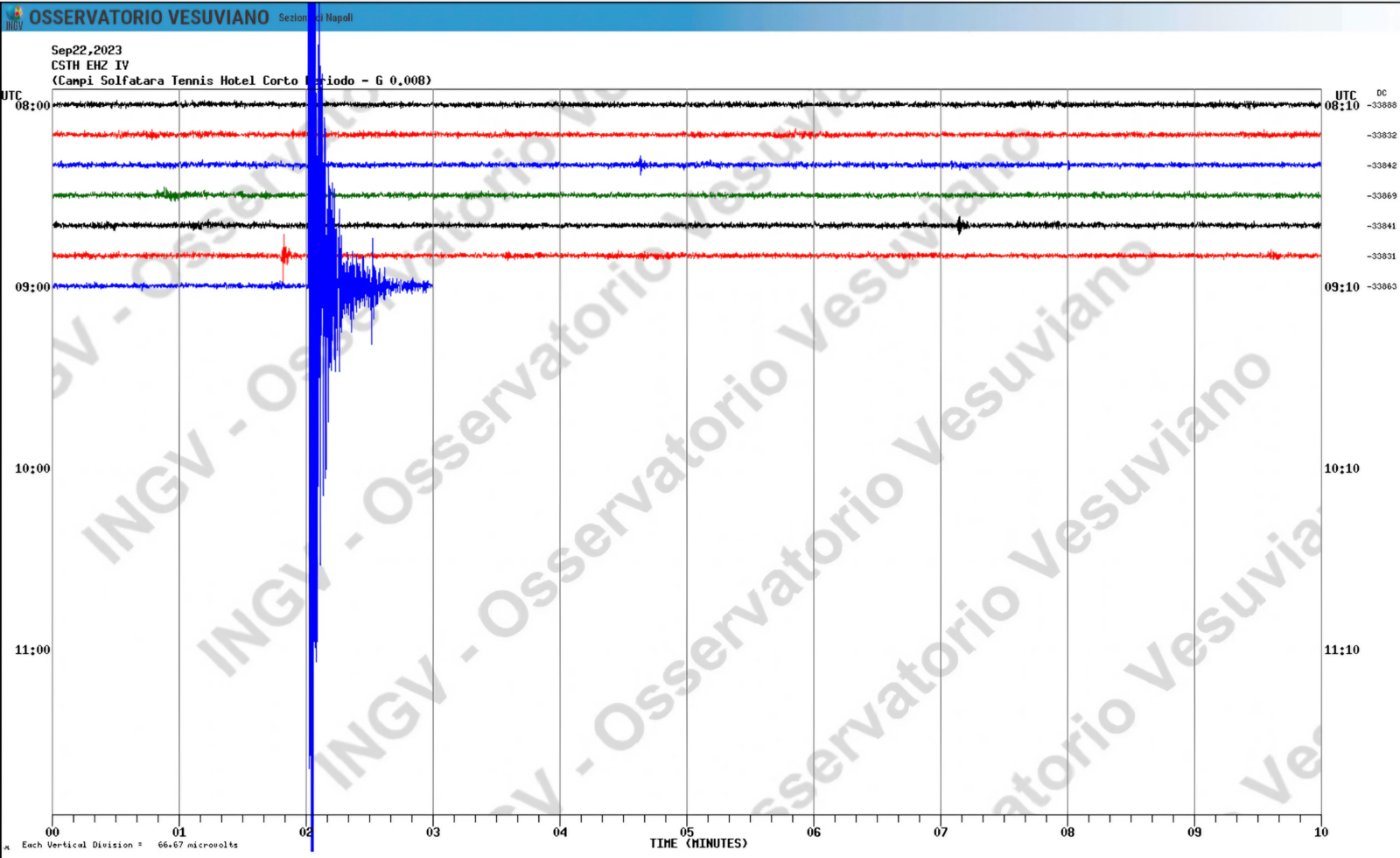The shadow of the Vesuvio projects a thousand-year history on the soil of Naples, between natural beauty and potential dangers. Recently, some earthquakes shook not only the earth, but also the souls of the population.
This article is intended to separate fact from fiction, offering a scientifically based point of view to put the latest seismic events in the Solfatara area.
What we know about increased seismic activity
The recent earthquakes in the Campi Flegrei area, in Italy, are a worrying event for many, but there is no indication that they are a precursor to a volcanic eruption.
The strongest shock, of 4.2 magnitude, it occurred on September 27, 2023 at 3:35 am. It was clearly felt in some neighborhoods of the Neapolitan capital, such as Fuorigrotta, Bagnoli and Pozzuoli. The hypocenter was localized about 3 kilometers deep.
The shock was preceded by intense seismic activity, with over 80 events of magnitude less than 3,2. This seismic activity began on September 26.
An event that raised more than one eyebrow among people. But before thinking about the apocalypse, it is useful to contextualize. Experts agree: these tremors, although worthy of attention, they are not warning signs of impending disaster.

What is bradyseism
In Neapolitan sauce, the term Bradyseism represents a “slow dance” of the terrain. These are ascending and very graduated movements of the earth's crust, which sometimes bring with them low-level seismic episodes.
Il bradyseism it is a geological phenomenon that involves vertical movements of the ground, generally slow and graduated. These movements can be either lifting or lowering they occur over periods of time ranging from months to years. The phenomenon is often related to variations in the level of magmatic or hydrothermal fluids underground and can be accompanied by seismic episodes, usually of low magnitude.
In the Vesuvian area and in particular in the Solfatara area, bradyseism is a known and studied phenomenon. Here, it manifests itself predominantly as a slow uplift of the land. While it may cause concern, especially when associated with seismic tremors, it is important to note that bradyseism itself it is not generally an indicator of imminent volcanic eruptions or large magnitude earthquakes.
The experience in the 80s
For those who lived in Naples in the 80s, bradyseism is certainly nothing new. Beds that barely move, sensations of a slight rocking: daily life incorporated these phenomena without too much apprehension.
It's like a song you've already heard, which comes back to the fore every now and then.
Between 1983 and 1984 bradyseism was very active, then end its activity after about two years. Activity which now seems to have resumed with a trend very similar to the previous one.
The statements of Doglioni, president of INGV: will there really be an eruption?
They caused quite a stir Doglioni's recent statements, president of INGV, which have created various alarms about a possible eruption.
For the Campi Flegrei there are two possible scenarios. The least critical scenario is a situation similar to the 1982-84 crisis which lasted 2 years and then stopped. The most critical scenario is an eruption like that of Monte Nuovo"
Carlo Doglioni
Statements that have, rightly, made some hairs stand on end, but you have to be careful to the words used: the scenarios are not equally probable, this means that It's not a 50/50, a simple coin flip with fate.
The possibility of an eruption is absolutely minimal, just as the probability of a building collapsing is minimal because you leaned against a wall with your hand.
From a scientific point of view, talk about possible scenarios It doesn't mean talking about things that will actually happen, but of scenarios that have some probability of occurring from the most infinitesimal to the almost certain.
To confirm this, just look at the statements from just 5 days earlier. As reported by Corriere della Sera, Doglioni himself, in fact, stated:
We have no elements that could lead us to say that there will be an eruption, but there will be an increase in seismicity.
Carlo Doglioni
Is the seismic risk real?
In fact, science is telling us "don't worry, wait a moment". THE seismographs, our "antennas" to capture the Earth's movements, have not recorded a high seismic or volcanic risk.
The only recent earthquake that has been detected is that of magnitude 4.2, but this too must be framed in a broader geological context and not associated with an imminent catastrophe.
The earthquake was indeed detected by the seismographs on Vesuvius, but to a minimal extent, precisely confirming the fact that it was very localized bradyseism.
The previous tremors did not even reach the seismographs on Vesuvius.
Why shouldn't we listen to individuals seeking fame?
In an age of instant information, there is never a shortage of “keyboard experts” ready to sow panic and confusion. Often, as already happened during the last Pandemic, these are also individual authoritative figures, just as in fact everyone will have heard someone say "Read what so-and-so said".
But as already demonstrated, very often these are figures who ride the moment in search of fame, notoriety and easy acclaim.
But in such delicate topics, it is essential to base ourselves on what the global scientific community has to say. These are the individuals and organizations who constantly study, analyze and monitor our planet, armed with data and the scientific method in a global collaboration.
The individual can say a lot, but that is what is relevant which is said and verified with data in hand.




